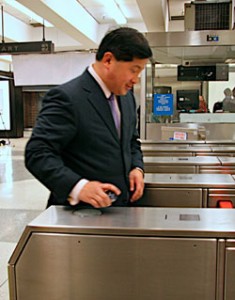Present and Future of Mobile Payments
 Mobile payment is the collection of money from a consumer via a mobile device such as their mobile phone, SmartPhone, or Personal Digital Assistant (PDA). Mobile payments can be used to purchase a good or service online, pay in a retail location, or transfer money to another person. There are many methods for mobile payments, such as premium SMS (Short Message Service), WAP (Wireless Application Protocol), and NFC (Near Field Communication). Following a few key points about these particular methods.
Mobile payment is the collection of money from a consumer via a mobile device such as their mobile phone, SmartPhone, or Personal Digital Assistant (PDA). Mobile payments can be used to purchase a good or service online, pay in a retail location, or transfer money to another person. There are many methods for mobile payments, such as premium SMS (Short Message Service), WAP (Wireless Application Protocol), and NFC (Near Field Communication). Following a few key points about these particular methods.
• WAP: Wireless Application Protocol • SMS: Short Message Service – Use mobile network to initial and authorize transaction – Dominant technology at least until 2011 • NFC: Near Field Communication – Based on RFID – Led by Asia – Use merchants’ existing POS – 40 Million Japanese use mobile wallet • 30% use it at least one a month – San Francisco just implemented BART: Bay Area Rapid Transit
 The two dominant methods are SMS and NFC. All of you are familiar with SMS as it is very common in the US and Europe, but chances are none of you even hear of NFC. NFC is a method to use your mobile device as an electronic payment method just by sliding it or approaching it to a sensor that can read and detect their RFID (Radio Frequency Identification). All mobile devices emit a frequency that identifies the device, and it is extremely common in Asia to have a reader that can detect the frequency and bill against it. So to make it extra clear, imagine walking in into a fast food chain, ordering your food, scanning you mobile device against a reader, and leave…
The two dominant methods are SMS and NFC. All of you are familiar with SMS as it is very common in the US and Europe, but chances are none of you even hear of NFC. NFC is a method to use your mobile device as an electronic payment method just by sliding it or approaching it to a sensor that can read and detect their RFID (Radio Frequency Identification). All mobile devices emit a frequency that identifies the device, and it is extremely common in Asia to have a reader that can detect the frequency and bill against it. So to make it extra clear, imagine walking in into a fast food chain, ordering your food, scanning you mobile device against a reader, and leave…
Let me give you an idea of how huge this is in Asia. In 2006, there were 9 thousand mobile payment users in Europe, 7 thousand in the US, and 6 million in Asia. Numbers grew this year to 1 million in the US and 28 million in Asia, and it’s projected for 2011 to be 7 million in the US and 68 million in Asia. By 2011, WAP will slowly disappear, being responsible for only about 27 million transactions, compared to 309 million NFC, and 567 million SMS transactions.
Impressive right? You want more numbers? The Philippines had around 3 million users for mobile money transfer by 2006, who were spending approximately $70 million per month. Vodafone launched m-pesa in March 2007 and within eight months over one million users registered and over 50 million euros transferred. However, don’t think this is all just Japan… Sprint announced that they will introduce NFC in the San Francisco Bay Area by allowing certain test group to pay their BART (Bay Area Rapid Transit) with their mobile phones.
The last market for mobile payments it’s what’s called A2A (Account to Account), which is mobile money transfer such as Paypal. To give you an idea, CashEdge’s A2A transfer volume grew 300% in 2007 to more than $38 billion.
Mobile usage is growing exponentially, and more and more people start to use their mobile for accounting, billing, and manager their money. I personally installed PayPal and PageOnce on my iPhone, and am really looking forward to a larger penetration of NFC in the US, as it really makes small payments so much easier.